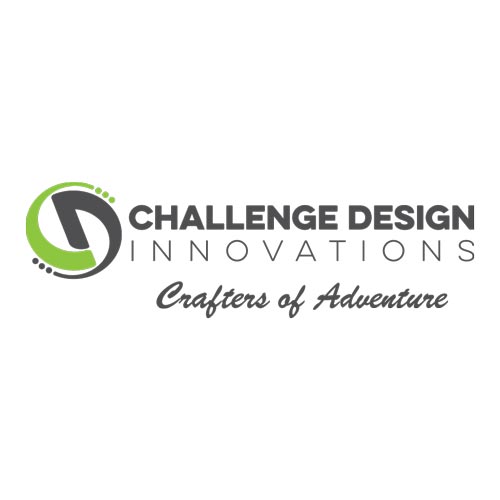Step 1: Prioritize Free Play
Today's parents and caregivers are paying more attention than ever to the choices of activities for their children - not just in structured activities, but more increasingly in free play. Parents recognize the need to choose wisely and offer their children the best experience possible. This means that landscape architects, play space designers, and decision-makers are required to more carefully evaluate their choices for commercial playground equipment when preparing new playgrounds and schoolyards.
The motives for good activity choices in free play are many, starting with the need for children to be physically active to build fit and strong bodies. These incentives extend with the benefits of active play in promoting better academic success, continue in the indirect learning opportunities, and include the enhancement of essential life skills such as decision-making and self-confidence.
Physically, children's daily activities are becoming more sedentary. An ever-growing volume of studies show alarming trends in children's wellness, and childhood obesity is on the rise along with a variety of illnesses that appear to be attributed to poor overall health. Experts seem to agree that the one key to solving these health issues is for children to participate in at least one hour of moderate-to-vigorous physical activity each day. Some proponents advocate for organized sports, or for increased PE programs in school. While these activities can contribute to the total amount of physical activity a child achieves in a given week, they cannot completely solve the problem. Many children lack interest or aptitude for organized sports, and even more, will avoid any activity if they are told they must do it. The right kind of free play can present an environment that entices children to make their own choice to participate in activities that are inherently filled with beneficial physical activity. If a child feels like they are just having fun, and not following directions, they are more likely to be active for longer durations and for repeated periods.
The goals when designing play equipment or play spaces to generate this type of play activity should be to include elements that contribute to the development of coordination, flexibility, dexterity, balance, upper & lower body strength, core body strength, and cardiovascular health. However, the majority of children don't want to go to the gym to work out. Still, wise choices by playground equipment and playscape designers can present play opportunities that offer most or even all of these key health benefits in the same play space.
Step 2 - Encourage Active Play
While we realize that frequent play benefits children with their daily physical activity, it also extends beyond just profiting their youthful bodies. Recently, free play has been seen to reduce stress, allowing children to focus more intensely on their studies. Frequent short periods of active play can contribute to better learning. Active play, such as running around while pushing friends on a rotating climber, or forcing their legs to get the swing to go higher, will literally "get the blood pumping".
This increased blood flow brings refreshment to the whole body, most importantly by delivering an increased amount of well-oxygenated blood. The fresh flow of oxygenated blood in the brain increases cognitive abilities and generally contributes to a better learning experience. The "body refreshment" also tends to remove doldrums and physical attributes of stress, improving emotional stability and making students more receptive to lessons.
The activity of play is more than "just play" when the playground equipment is deliberately designed to give children a passive learning opportunity, which productively encourages them to further develop intellectually just from their play experience. While traditional play structures were often designed with a linear flow-through plan which encourages users to simply climb up, go down and repeat, many wonderful creations are being designed using nets and flexible materials. These flexible materials are chosen partly due to the many lessons that they contain, inherent in their nature: scientific principles such as cause and effect, perpetual motion, equal and opposite reaction; as well as angles and momentum.
The responsibility we hold as adults is to encourage the development of our children, to build their foundation of confidence and insight which will guide them throughout their lives. A good way to help children down this path is to allow them to think and make decisions; give them goals to achieve; let them fail and work to overcome their limitations. By presenting children with a plethora of play paths and the freedom to decide which they will follow, we let them choose their own way. Giving them practice in thoughtful consideration and decision-making by offering play equipment designed with many ways to use it helps them get ready to be leaders and trendsetters later in life. By giving them targets and goals that require effort to reach, such as climbing higher & higher in a towering net, we help to build their confidence to reach higher and farther as they continue to mature physically and mentally.
Step 3 - Think Outside the Box
Playground equipment has seen much evolution since its inception. The first playgrounds were little more than sandboxes; play spaces for many years featured simple devices such as see-saws, carousels, and tall swings. Most people remember playing on modular structures of stairs, decks, and slides. One newer form of play design, matrix nets, offers a much better play experience for children by creating a constantly moving platform for play that has unlimited play choices and constant sensory feedback which inherently encourages children to be more active.
Innovative combinations of both net climbers, the pyramid-shaped and exterior-frame, have become more common in playgrounds these past few decades. Either featuring a matrix framed product, or a free-form, multi-plane net climber, that could also incorporate swinging, swaying, spinning, and more into adventures, actively removing any form of 'linear structured' play. The unique designs of net climbers are increasingly being completed around the globe and taking the playground industry by storm.
Another value these new creations possess is the accessibility of the play structure allowing users of all abilities to participate in the same play experience. Unfortunately, the most common practice to do this is to acquire the 'classic standard' equipment targeted explicitly just for special-needs users. Although providing equipment targeted specifically to special-need users is an admirable step forward, an even better resolution would be to provide equipment that accommodates to everyone at the same time, offering accessibility for any user, according to their own desires and abilities.
Playspace designers do have a massive responsibility. The ultimate goal of today's new playground projects is to offer children of all ages a better play experience. The best playgrounds will be very enticing to children, attracting them to explore everything there, with a variety of sensations and puzzles that keep children intrigued for long periods of time. Experiencing that amazing feeling will have them craving to return again – making their own decision to leave behind computers or technology to just go out and play. Play that allows designers and buyers to make an immense contribution into how our children grow, learn and develop. Let's give them a better foundation for their future.














